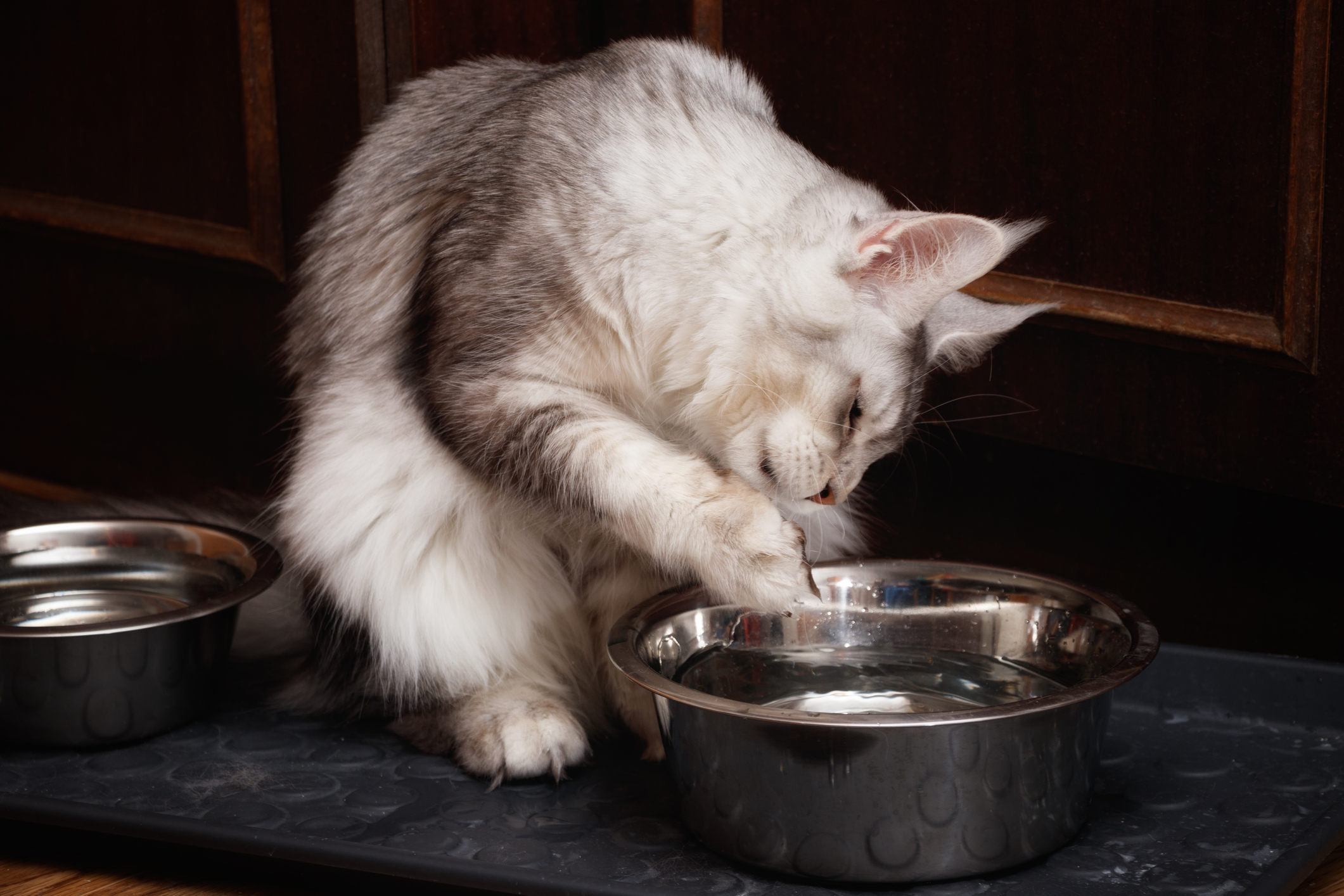
Have you ever watched your cat paw at their water before taking a drink? This quirky habit has a few interesting explanations, ranging from pure instinct and playfulness to potential health concerns.
Why Does My Cat Paw at His Water?
1. Natural Instincts at Work
Cats have strong survival instincts that date back to their wild ancestors. In nature, standing water can be risky. By pawing at water, cats are able to check for movement or debris, helping them decide if it’s safe to drink. Pawing also lets them gauge the depth of the water and avoid falling in.
Even though your cat lives safely indoors, those ancient instincts still influence their behavior. So when you see your cat pawing at the bowl, it’s often simply their way of “testing” the water.
2. Sensory Preferences and Comfort
Cats are sensitive creatures, and drinking from still water isn’t always appealing to them. Pawing at the water creates ripples, making it easier for them to see and locate the surface.
Another common issue is whisker fatigue. A cat’s whiskers are incredibly sensitive, filled with nerves that help them navigate their environment. When a cat’s whiskers constantly brush against the sides of a deep or narrow bowl, it can create discomfort or even pain. Pawing at the water could be their way of avoiding this irritating sensation. Using a wider, shallower bowl can help prevent whisker distress and make drinking more comfortable for your cat.
3. Playfulness and Curiosity
Sometimes, the answer to why your cat’s pawing at the water bowl is simple: your cat is playing. Water moves and catches light, making it an irresistible “toy” for curious cats. Kittens and younger cats, in particular, often paw at water as part of their exploration and play.
If your cat enjoys batting at toys, insects, or dangling strings, their pawing at the water bowl may just be an extension of their playful nature.
4. Boredom or Stress
If you notice your cat frequently pawing at their water bowl, it could be a sign they’re feeling bored or stressed. Cats sometimes develop repetitive behaviors when they lack stimulation. Adding more interactive toys, climbing spaces, or dedicated playtime each day can help reduce these habits.
5. Health Issues
While occasional pawing is usually harmless, a sudden increase in your cat’s interest in water could signal a health issue. Conditions like kidney disease, diabetes, or thyroid disorders often make cats thirstier than usual.
If you observe other changes, such as increased urination, weight loss, appetite shifts, or low energy, it’s important to consult a veterinarian. Catching health problems early is the best way to protect your cat’s health in the long run.
Supporting Your Cat’s Needs
If your cat’s pawing at water doesn’t seem linked to play or stress, consider these simple changes:
- Offer a wider or more accessible water bowl
- Try a cat water fountain, which provides flowing, fresh water that many cats love
- Keep the water bowl in a quiet, safe area of the home where your cat feels relaxed
- Keep an eye on your cat’s overall health and behavior changes
- Speak to a veterinarian if you have any concerns
When to Seek Professional Help
If you’re concerned about your cat’s behavior, the veterinarians at Portage Park Animal Hospital & Dental Clinic are here to put your mind at ease. Our team is here to answer your questions and support your cat’s health at every stage of life.
Schedule your vet exam by calling (773) 725-0260. We’re proud to be your trusted partners in keeping your feline friend happy and healthy!


